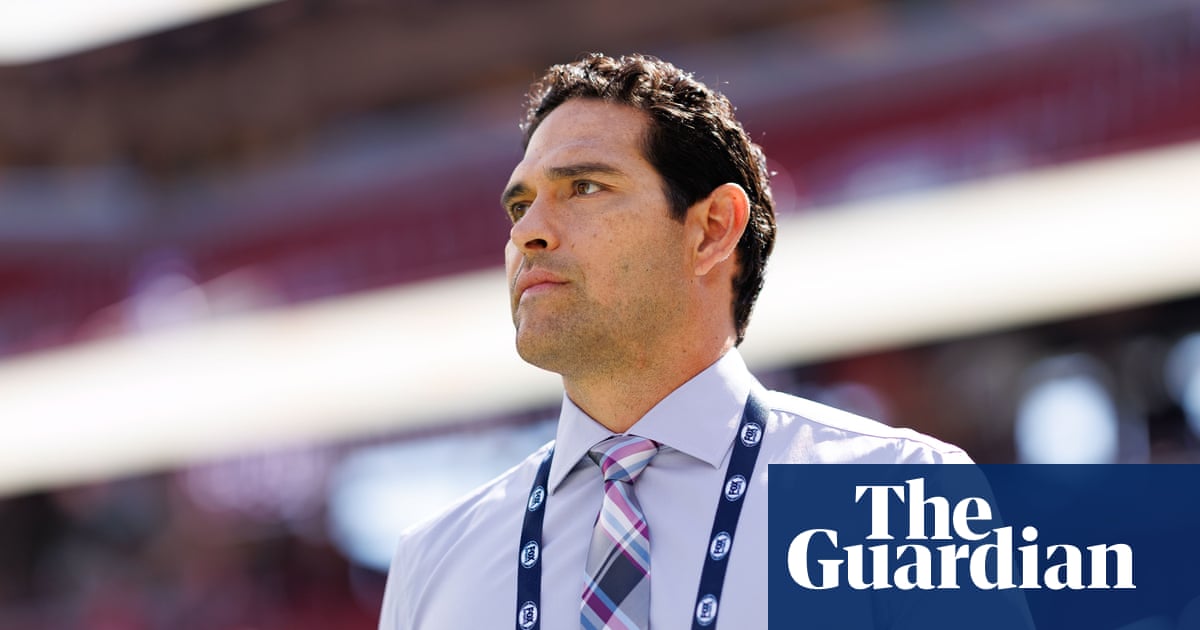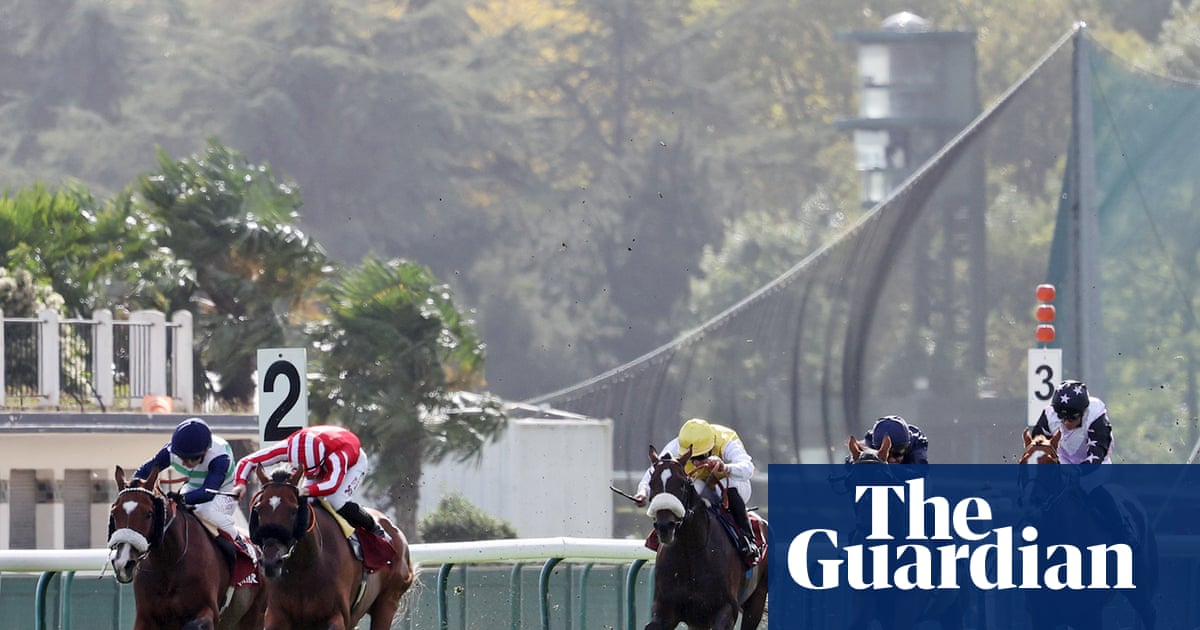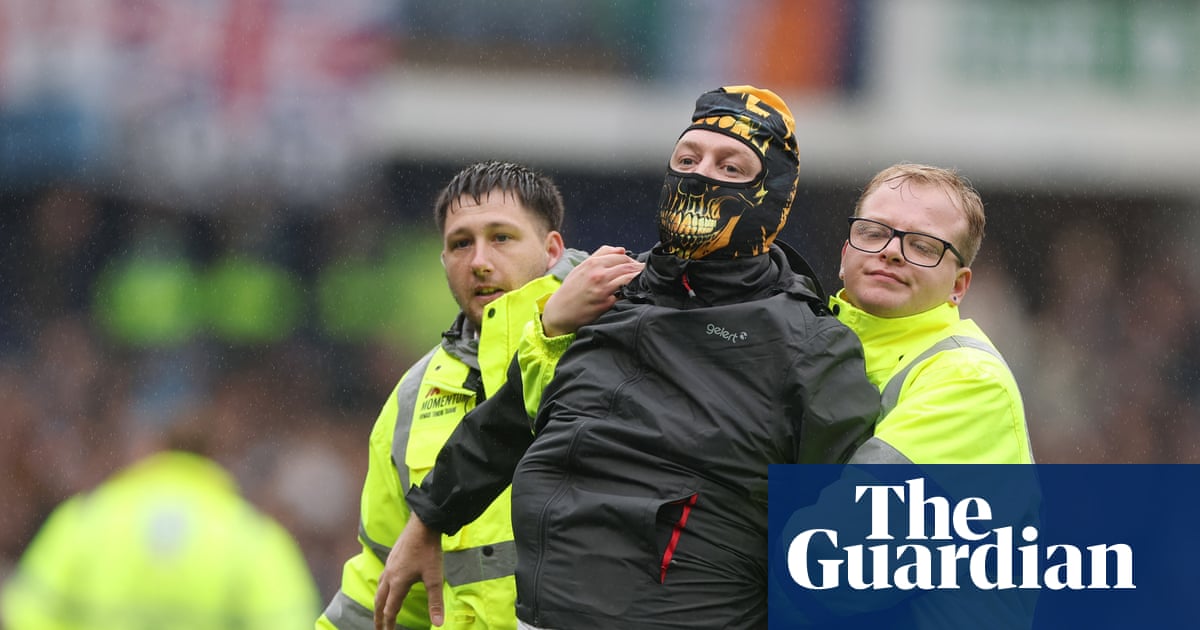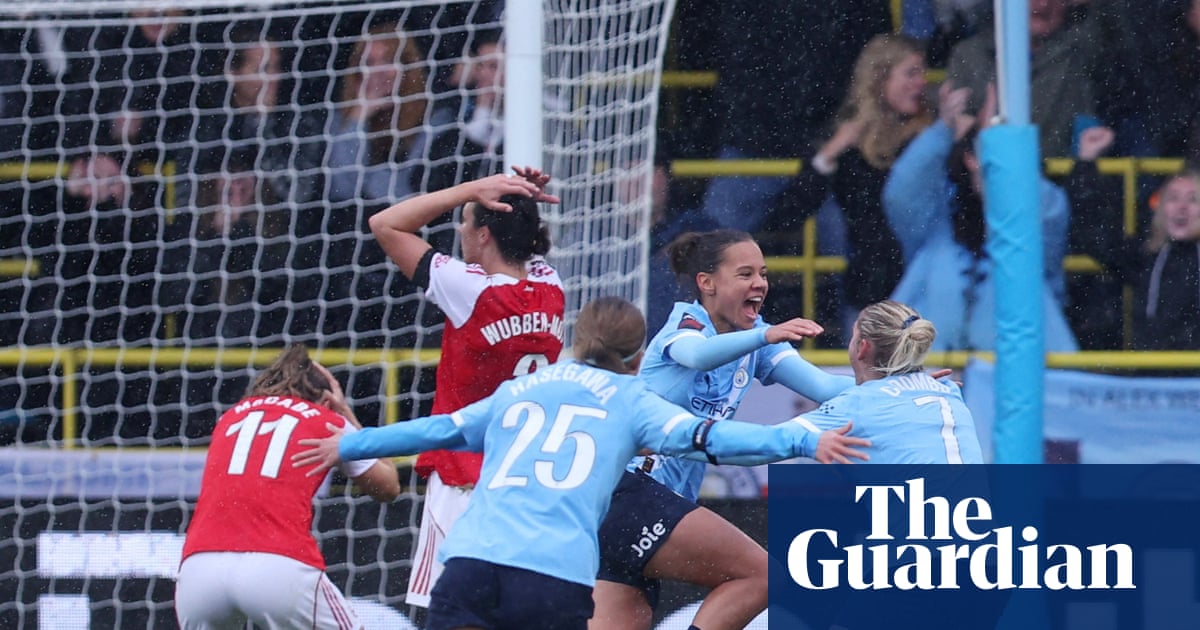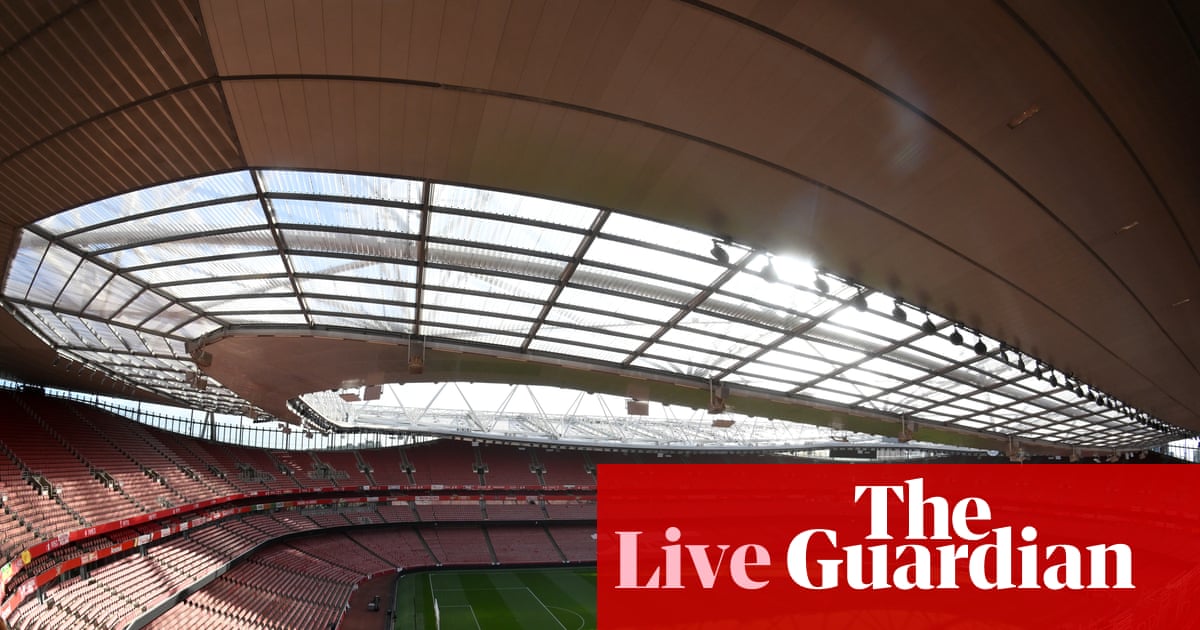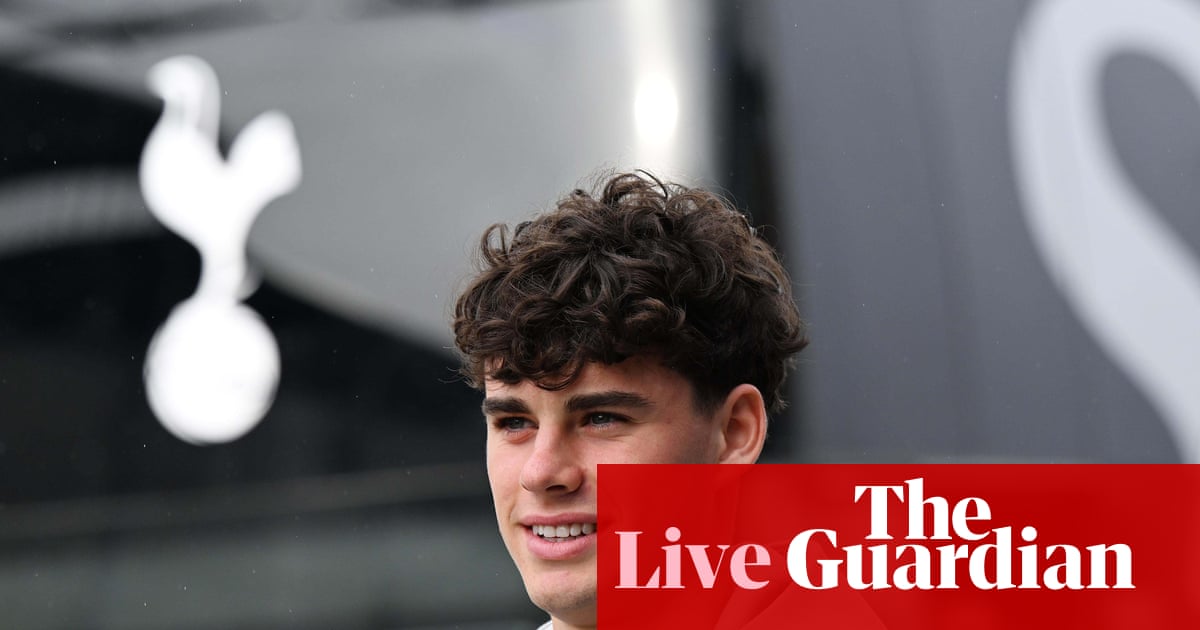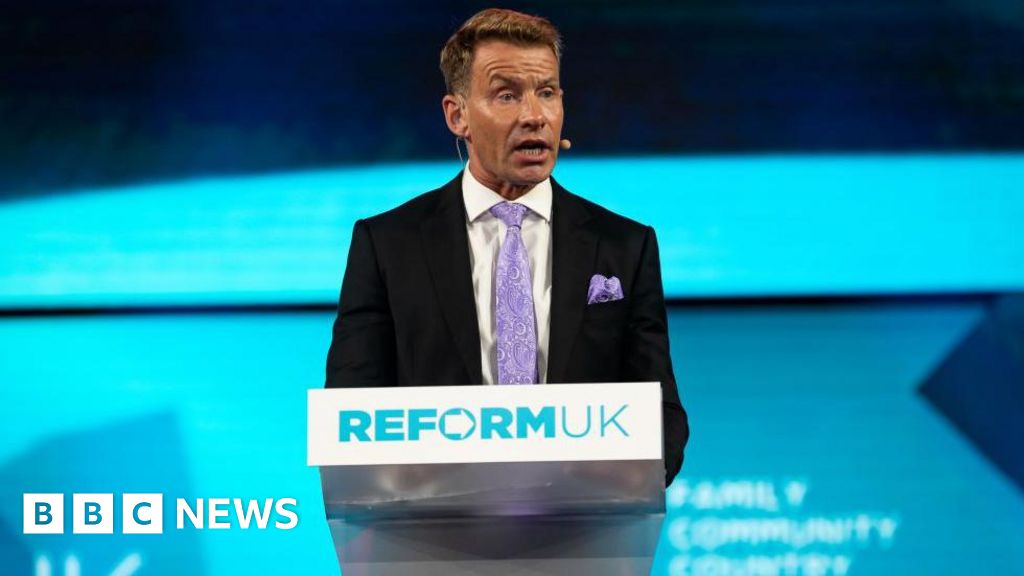When Chichester City confirmed that Saturday’s FA Trophy tie with Farnham Town would go ahead, they did so with a message: “Billy Vigar, forever in our hearts.” The match, the team’s first since Vigar’s tragic death a week previously, would be contested to “honour Billy”, the club said. “We invite you to join us in paying tribute to Billy on the day.”
Vigar, 21, died after sustaining a “significant brain injury” during Chichester’s Isthmian Premier League fixture at Wingate & Finchley on 20 September. His passing was mourned by Arsenal, where Vigar had been part of the academy, and more broadly by clubs and individuals from across non-league football. There was a great sadness at the passing of a player who was well liked in a tight-knit community but had died, as Vigar’s family put it, “playing the sport he loved”.
Although the cause of the lethal injury is yet to be officially confirmed, it is expected that it will be attributed to a collision between Vigar and a concrete perimeter barrier which surrounds the Wingate & Finchley pitch. In the aftermath of the player’s death, the Football Association announced it would conduct “an immediate review … that will focus on the safety of perimeter walls and boundaries around pitches in the National League System” – from the fifth to the 10th tier.
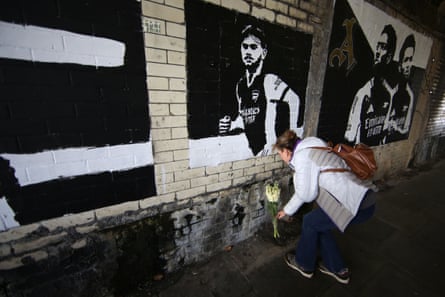
The FA’s announcement was met with astonishment in the lower levels of the football pyramid, partly because such incidents had happened before. “When I first heard news of the incident I just felt shellshocked,” says the former Bath City striker Alex Fletcher. “We will wait to see what the details and the specifics are but, obviously, it was being widely reported that it was a very similar incident in nature to mine. So it brought a lot back to me.”
Fletcher crashed into concrete advertising hoardings at Bath City’s Twerton Park during a match in November 2022. He sustained head injuries which necessitated emergency surgery and left the then 23-year-old in a coma. Eventually he returned to playing but had to relearn how to walk and is permanently deaf in his left ear. After his recovery, Fletcher spoke out about his experience and called for changes in the rules governing pitch boundaries to better take into account the safety of non-league players.
As far as he is concerned, nothing happened as a result. “Until now the leadership from the FA has been nonexistent,” Fletcher says. “I was very public and very vocal about what needed to be done. We tried to ask the people who are responsible for setting these regulations to involve players more in it because they’re the ones ultimately going to be able to tell you where they don’t feel safe. That consultation process hasn’t happened.”
This is especially shocking to Fletcher because his accident led to an intervention by government. In 2023 the then sports minister, Stuart Andrew, sent a letter to the FA jointly written with the Professional Footballers’ Association. The letter called on leagues (the FA oversees the operation of the National League system) to “take a proactive approach in working with clubs to ensure ground risk assessments take place, that clubs engage with players and other parties who may be able to help identify areas of concern within grounds, and that all parties work to put sensible mitigation measures in place where necessary to help improve player safety”. The letter continued: “As part of that process, we would also ask that leagues look at any standardised guidance they may give to their clubs on this issue to see whether it can be refined or improved.”
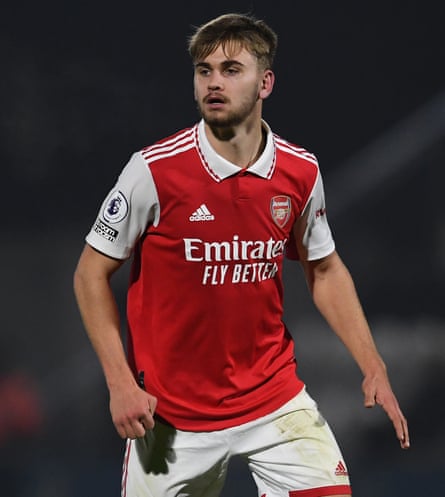
The FA says that responsibility for the health and safety of “participants and spectators” at the National League system level “is the responsibility of the clubs and their local authorities”. It does, however, set the minimum standards any club must follow in order for a stadium to be accredited to stage a match. In 2023, after Fletcher’s injury, the FA opted to conduct a broad review of safety at stadiums within the National League system and has since visited 890 football grounds. The body conducting the review said it had been commissioned in part because “there was very little information held centrally by any of the stakeholders such as the Premier League Stadium Fund, the FA and the Premier League on the facilities used”. Those inspections will feed into future guidance on stadium criteria, according to sources, but currently the criteria relating to perimeter barriers, which are largely in place to stop spectators from entering the pitch or balls running far beyond it, require that they are of “sound construction (eg concrete and steel)”.
The absence of any intervention from the FA has distressed many in the National League system who say the warnings of the risks to players’ safety were made clearly and repeatedly. “It was a really strange one because nothing happened and you expected it to,” says John Peel, a director at Lewes, another Isthmian Premier League side. “Sometimes it takes a long time to come up with a new decision or a new policy. So you’re always kind of thinking: ‘Well, maybe it’s coming.’ But it never did.”
Describing the FA’s statement in response to Vigar’s death as “really odd”, Peel said: “I thought it passed the buck a little bit when really it’s their responsibility because they’re the ones who set the rules.”
Lisa Nandy, the secretary of state for culture, media and sport, said this week that government would be “reviewing with sporting governance bodies the safety conditions of sports venues across the country” with a view to ensuring we never have another tragedy like this again.
after newsletter promotion
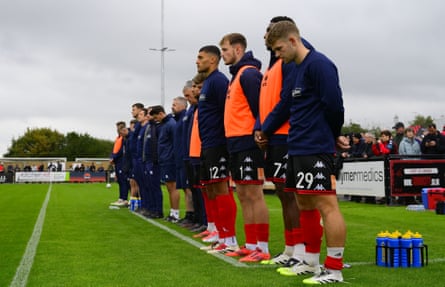
Fletcher says it is the FA’s responsibility to determine what happens next and what the solutions should be to an issue that has been obvious for some time and has now claimed a human life. He suggests the distance between the boundaries of the pitch and any barrier, the so-called “run off”, should be looked at, alongside a move away from inflexible, hard materials.
“We know that clubs aren’t blessed in all divisions with a great deal of space around the stadium,” Fletcher says, “but the [minimum] distance of [the run-offs], you’re talking no longer than the length of an average male. That’s not enough room for a footballer to stop when they’re competing full-blooded on the pitch. The material is what I maintain is the biggest problem. I’ve played at plenty of grounds where you’ve got these more flexible materials that are designed to give way on impact. And what that would mean is a greater stopping distance, obviously, for the player.”
The minimum run-off requirement in the National League system is 1.83 metres while the minimum in the EFL is 2.25m, with 2.75m preferred. The minimum for any new-build in the National League system, however, is three metres. That is the recommended minimum run-off in the Premier League.
Wingate & Finchley announced last weekend that they intended to install “rubber safety padding” around their ground after the tragedy, saying “there is currently no appetite for football at the Maurice Rebak stadium”. Their home match on Saturday will be hosted by their opponents, VCD Athletic.
Lewes, meanwhile, have offered counselling to their players and say they will not force anyone to play in grounds with perimeters which feel unsafe. These are mitigation in the face of a broader problem which has been waiting too long for a solution. Meanwhile the family of Billy Vigar will continue to grieve.
.png)
 20 hours ago
4
20 hours ago
4

